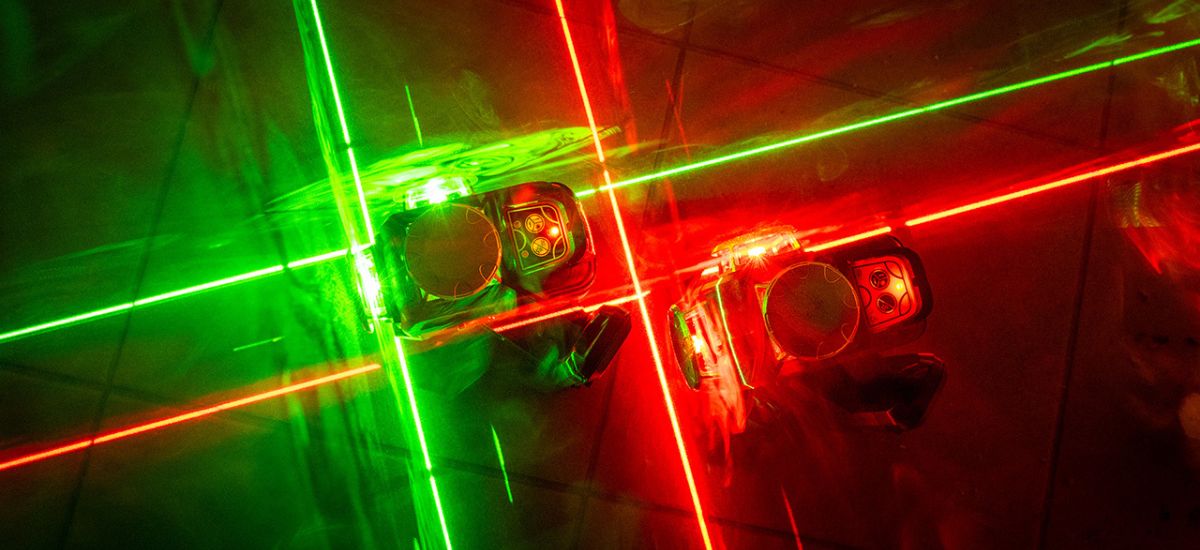When you’re choosing a new car and there’s a choice between red and green for the paint-job, the decision is all yours. But when it comes to a new laser level for your organisation of workforce – that indispensible modern construction and surveying measurement tool – choosing red or green really does make all the difference.
As we know, a laser level is an affordable yet ingenious tool that uses the ‘magic’ of lasers to ensure that the work, ground or object you need to be dead-level is just that. Normally with self-levelling features as standard, it shoots out either horizontal or vertical (or both) laser lines that conveniently leaves the user nothing to do but to proceed with the task with confidence that the reference level has laser-like precision.
As you browse the diverse product range, however, one unmistakably feature between one laser level and the next is the colour of the beam itself – red or green. We start with red because, as you will have observed since laser technology was pioneered at the end of the 50s, lasers tend to be red as standard – for good reason. It’s because the simplest semiconductor diodes in standard laser technologies produce a wavelength range of about 700-800 nanometers, which is that familiar deep orange to deep red laser colour.
And for the most rudimentary tasks for the laser level – like shooting out a horizontal beam for a perfectly-level set of shelves, for instance – red is arguably easier to spot on a light-coloured wall than green would be.
Actual scientific research, however, tells a different story. It is now beyond doubt that on the bell curve of light visible to the human eye, we see more shades of green than any other colour. And it’s probably no surprise, given that we evolved not at a computer desk or on a construction site, but in the very green natural world. And so when those laser level tasks are taken out into natural sunlight, or need to be spotted over longer distances, it’s a green laser that will serve your eyes better.
So why not simply make green the laser level standard? Again, the explanation is simple: green lasers require more power and more sophisticated technology. The reason for that is that, unlike that simple and stable 700-800 nanometer range mentioned earlier, green lasers require wavelengths below 600 nanometers – which is more difficult. Indeed, the green-laser device still uses a semiconductor diode emitting laser light at 800 nanometers or so, but then it’s focused onto neodymium crystal, turned into an infrared beam to produce about 1000 nanometer wavelengths, before it is passed through another crystal to emerge as 530-540 nanometers – otherwise known as green light. And, understandably, you pay a little more for the extra componentry, complexity and power.
Red or green laser level: How to choose
Brightness: If you’re working indoors over short distances, red will suffice. But when the space is starkly lit or outdoors, green is the better bet.
Battery life: Green laser levels will either chew through your batteries faster or require bigger and more expensive batteries.
Cost: More complex technology, like the green laser level, is more expensive.
Do you need a little more guidance selecting the right laser level technology for your organisation, workforce or applications? Get in touch with our friendly and knowledgeable industry guides at RS.
